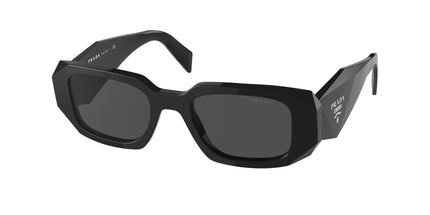VR Headsets - Are They Bad for Your Vision?

Virtual Reality is infamous for creating a stimulating, immersive virtual environment for users. Over the years, VR has released innovative ways of immersion, allowing it to dominate the technological world.
One of the industries where VR is used the most is gaming. People, especially youngsters, spend more time on technological devices, creating more space for VR. However, all these technological advancements that VR has acquired have made people more conscious about their health and vision.
So, is VR just as bad as blue light and UV rays? Let’s find out:
How Does a VR Headset Operate?
A headset is a head-mounted device integrated with head-tracking technology that quickly changes the visual perimeters of the user as soon as they move their head around. Another technology called the eye-tracking feature also describes the depth of an image in 3D reality. As a result, VR headsets create an immersive, computer-generated simulation environment for the user.
How Do VR Headsets Affect the Vision?
The Majority of VR headsets have two LCDs integrated into them that project imagery to each eye. These LCDs help develop a stereoscopic effect, giving the user an impression of depth. These LCDs present so close to the eyes can cause eye strain.
This makes it a common concern among optometrists. Besides eye strain, the following are the effects of VR headsets on the eyes:
- Fatigue
- Declining vision
- Anxiety
- Dizziness
- Nausea
- And radiation exposure can cause acute risks to sleep hormones and the reproductive system or cause extreme mood swings.
Eye Strain Caused by VR Headsets
Virtual reality creates a realistic simulation that alters how the user sees the surroundings. This can cause motion sickness and overall discomfort. More than 70% of VR headset users report that they experience dizziness and nausea while using the headset for extended periods.
People have reported common problems like eye strain and discomfort while wearing VR headsets, as their eyes require more focus on the scenery present only a few millimeters away from them.
If you suffer from eye strain and muscle fatigue, just take a break to rest your eyes. It will ease the pain.
What About Kids? Is VR Headset Bad for Them?
Most of the games made today are VR-compatible. This means that kids are the most at risk of the adverse vision and mental effects caused by VR. Moreover, doctors and optometrists have been warning parents and raising awareness against kids' constant and regular use of VR.
What Happens When Kids Regularly Use VR Headsets?
- According to medical studies, VR headsets cause lazy eyes in kids having pre-existing vision problems.
- Extended use of VR headsets can cause ocular problems (double vision or myopia) in children. It also causes balancing issues or other vision problems.
- VR headsets and apps can affect children’s brain-eye and head-eye coordination, visual development, and multi-tasking capabilities.
How to Counter the Effects of VR on Children’s Eyesight?
Encourage your children to take short breaks (preferably 5 minutes) after every twenty minutes on the VR headset. Plus, encourage them to be more physically active by participating in games instead of using VR headsets for extended periods.
Can Eyeglass Wearers Use VR Headsets?
Eyeglass wearers can wear VR headsets. However, make sure that the headset doesn’t put any pressure on the glasses, causing them to bend or, worse, break. If you have premium frames for your glasses, ensure they aren’t taller than 50 mm and wider than 142 mm.
Can VR Help Users with Low Vision Issues?
Prolong use of VR headsets is related to many vision concerns. However, there are some advantages attached to VR headsets, too. For example, if your eye specialist or optometrist recommends using a VR headset, you can regain your vision - without the problems you had.
The latest innovations in VR headsets allow people to improve hand-eye coordination, reaction time, eye coordination, and depth perception.
Should You Visit a Doctor When Using VR Headsets?
If, after using a VR headset, you have double or blurry vision, go to the doctor immediately. Other symptoms that require a visit to the doctor’s office include:
- Pain or eye discomfort
- Eyestrain
- Double vision
- Altered or blurred vision
- Twitching eye muscles
- Dizziness
- And other eye problems!
Your doctor will conduct a comprehensive eye checkup to ensure that the overall health of your eyes is optimal. This is necessary, especially if you are an eyeglass wearer.
Conclusion
VR is a thrilling technology with promises to change the face of the world. However, excessive use of it can be bad for adults and children. So, it’s advised that VR headsets be used with precaution and for short periods.















 Back to Blog Page
Back to Blog Page











